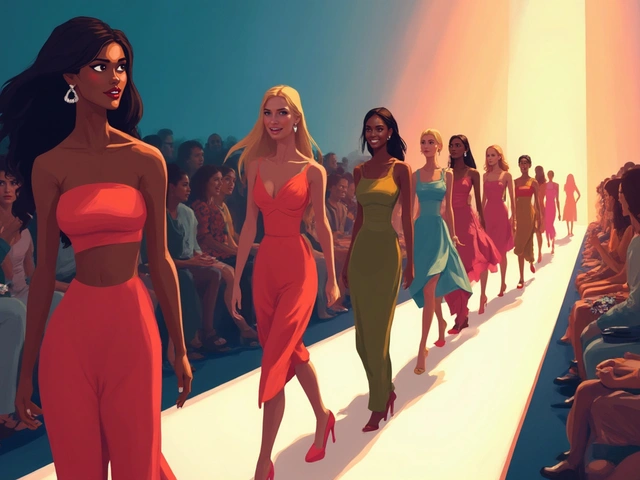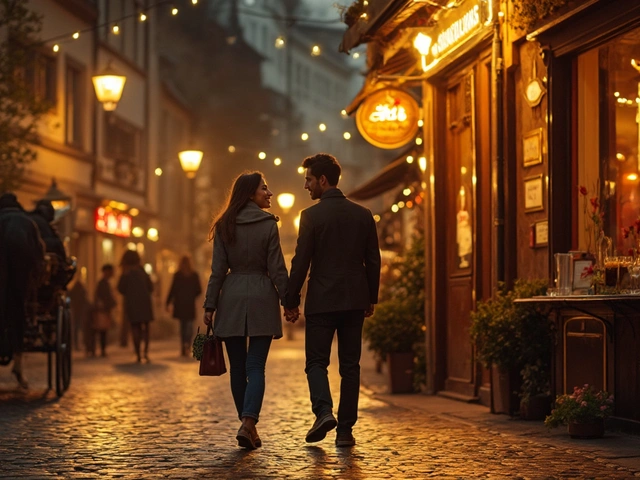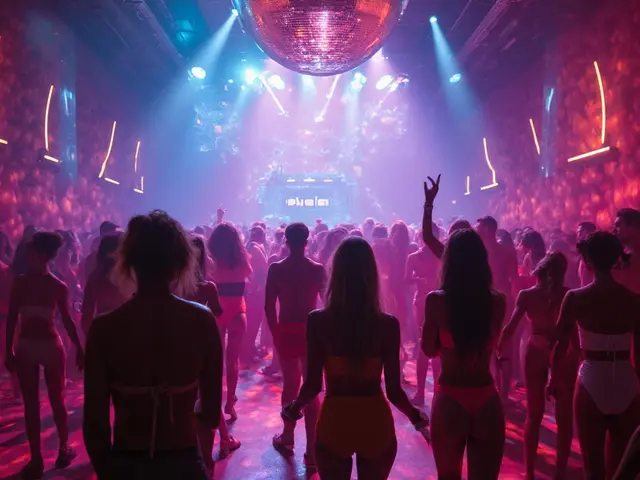You’ve seen them on billboards, magazine covers, and Instagram feeds-supermodels who didn’t just walk runways, they smashed them open. These weren’t just tall, thin women in designer clothes. They were cultural disruptors who forced the fashion world to rethink what beauty looks like. And it didn’t happen overnight. It took grit, visibility, and a whole lot of defiance.
What Supermodels Really Changed
Before the 90s, fashion was ruled by a narrow standard: pale skin, straight hair, a waist under 24 inches, and a face that looked like it was carved from marble. Supermodels like Naomi Campbell, Cindy Crawford, and Linda Evangelista didn’t just wear clothes-they rewrote the rules. But it wasn’t just about their looks. It was about their presence. They spoke up. They negotiated million-dollar contracts. They showed up on talk shows and acted like they belonged everywhere, not just in fashion magazines.
Today, when you see a model with stretch marks, vitiligo, or a curvy frame on a Gucci campaign, that’s not an accident. That’s the legacy of supermodels who refused to fit into a box. They turned fashion from a gatekept industry into a reflection of real people.
The Breakthrough Moments That Shook Fashion
Think about the first time you saw a Black model on the cover of Vogue-not as a side note, but as the face of the issue. That was Naomi Campbell in 1989. Before that, Black models were rare on high-fashion runways. Campbell didn’t just walk; she owned every step. She walked for Yves Saint Laurent, Chanel, and Versace when few others were given the chance.
Then there was Tyra Banks. She wasn’t just the first Black woman to grace the cover of Sports Illustrated Swimsuit Issue in 1996-she later became the first Black woman to appear on the cover of GQ in 1998. She didn’t wait for permission. She built her own platform with Tyra Banks Show and later America’s Next Top Model, giving space to models who looked nothing like the traditional ideal.
And let’s not forget Ashley Graham. In 2016, she became the first plus-size model to appear in the Sports Illustrated Swimsuit Issue. That wasn’t just a milestone-it was a seismic shift. Suddenly, brands like Lane Bryant, Aerie, and Savage X Fenty started hiring models who looked like actual customers, not fantasy figures.
How Supermodels Broke the Body Standards
For decades, the fashion industry told women: be smaller. Be lighter. Be quieter. Supermodels pushed back by being louder, bolder, and unapologetically themselves.
Christy Turlington, known for her ethereal beauty, became an advocate for maternal health after nearly dying during childbirth. She used her platform to speak about postpartum recovery, something rarely discussed in fashion circles. She didn’t just model clothes-she modeled resilience.
Then came Winnie Harlow. Diagnosed with vitiligo as a child, she was told she wouldn’t make it in modeling. But in 2014, she walked for Chanel and later became the face of Puma and MAC Cosmetics. Her skin wasn’t a flaw-it was her signature. And suddenly, the industry had to decide: do we keep excluding people who don’t fit the mold, or do we evolve?
The answer? They evolved. Slowly, but unmistakably.
From Runway to Reality: The Ripple Effect
When supermodels broke barriers, it didn’t stay on the runway. It spilled into advertising, retail, and even how we see ourselves in the mirror.
Before 2010, most clothing brands made sizes up to 12. Today, brands like Universal Standard, Eileen Fisher, and even Zara offer extended sizes because consumers demanded it. And guess what? Those consumers were inspired by the models they saw on Instagram-models who looked like them.
Even luxury houses changed. Gucci’s 2018 campaign featured models of all sizes, skin tones, and gender expressions. Louis Vuitton hired a transgender model, Valentina Sampaio, for their 2020 campaign. These weren’t token gestures-they were responses to a cultural shift that supermodels helped create.
And it’s not just about size or skin tone. Supermodels like Iman and Alek Wek brought African features into mainstream fashion. They proved that beauty isn’t one thing. It’s many things. And the world is finally catching up.
Why This Matters to You
Maybe you don’t care about fashion shows or designer labels. But you care about how you feel when you look in the mirror. You care about whether your body is seen as valid, whether your skin tone is represented, whether your shape is considered beautiful.
Supermodels didn’t just change the industry-they changed the conversation. They made it okay to be different. To be bold. To be yourself. And that’s not just fashion. That’s freedom.
When you see a girl with curly hair in a high-end ad, or a woman with scars modeling swimwear, that’s not just marketing. That’s healing. That’s representation. That’s what supermodels fought for.
Who’s Leading the Charge Today?
The revolution didn’t end with the 90s. It’s still happening.
Paloma Elsesser, a plus-size model and activist, walks for Prada and has spoken openly about mental health and body dysmorphia. She doesn’t just wear clothes-she wears truth.
Valentina Sampaio, the first openly transgender model for Victoria’s Secret, broke barriers in a brand once known for its rigid beauty standards. Her presence didn’t just make headlines-it made history.
And then there’s Hunter Schafer, a non-binary model and actor who models for Miu Miu and Dior. She doesn’t fit into traditional gender boxes-and the fashion world is better for it.
These aren’t just names on a casting list. They’re architects of a new normal.
What’s Still Missing?
Progress isn’t perfect. The industry still has a long way to go. Runways in Milan and Paris still favor ultra-thin models. Size 0 is still the default for many high-end shows. And many brands still use digital editing to erase stretch marks, cellulite, or wrinkles.
But the difference now? We notice. We call it out. We support brands that get it right. And we celebrate models who show up as themselves.
The power has shifted. It’s no longer just designers and editors deciding what’s beautiful. It’s you. It’s me. It’s the millions of people scrolling, sharing, and saying: This is who I am. And I’m enough.
Comparison: Supermodels Then vs. Now
| Aspect | 1990s Supermodels | 2020s Supermodels |
|---|---|---|
| Body Type | Extremely thin, hourglass | Curvy, athletic, plus-size, petite |
| Skin Tone | Primarily white | Black, Brown, Asian, Indigenous |
| Gender Expression | Strictly female | Non-binary, transgender, gender-fluid |
| Disabilities/Conditions | Never featured | Vitiligo, scars, limb differences |
| Public Voice | Quiet, polished | Activists, podcasters, authors |
| Brand Influence | Modeled for designers | Co-created lines (e.g., Savage X Fenty) |
Frequently Asked Questions
Who were the first supermodels to break racial barriers in fashion?
Naomi Campbell and Iman were among the first Black supermodels to gain global recognition in the 1980s and 90s. Campbell became the first Black woman to appear on the cover of Vogue in 1989, while Iman, a Somali model, broke barriers by walking for top designers and launching her own cosmetics line focused on inclusive shades.
How did supermodels influence body diversity in fashion?
Supermodels like Ashley Graham and Paloma Elsesser challenged the industry’s obsession with thinness by modeling for major brands and speaking out about body image. Their visibility led to extended sizing in mainstream retailers and forced brands to rethink who their customers actually are.
Are supermodels still relevant today?
Yes-but their role has changed. Today’s supermodels aren’t just faces on billboards. They’re entrepreneurs, activists, and creators. Think Rihanna with Savage X Fenty or Gigi Hadid launching a lingerie line with Tom Ford. Their influence extends beyond runway walks into product design, marketing, and cultural conversations.
Why do some fashion shows still use only thin models?
Some designers still cling to outdated ideas about silhouette and proportion, believing thin bodies better showcase their designs. But this is changing. More designers now cast diverse models because customers demand it-and because inclusive casting sells. Brands that ignore this risk becoming irrelevant.
Can one model really change the industry?
Absolutely. One model can shift perceptions. Winnie Harlow didn’t just get a job-she made vitiligo visible to millions. That visibility changed how people see skin conditions, and it pushed brands to stop editing out natural features. Change starts with one person refusing to disappear.
Final Thought: Beauty Is a Movement, Not a Mask
Supermodels didn’t just wear clothes. They wore courage. They walked into rooms where they weren’t welcome-and stayed. They turned their differences into power. And in doing so, they gave millions of people permission to do the same.
Next time you see a model who looks nothing like the old fashion ideal, don’t just scroll past. Celebrate it. Because that’s not just a photo. That’s progress.



